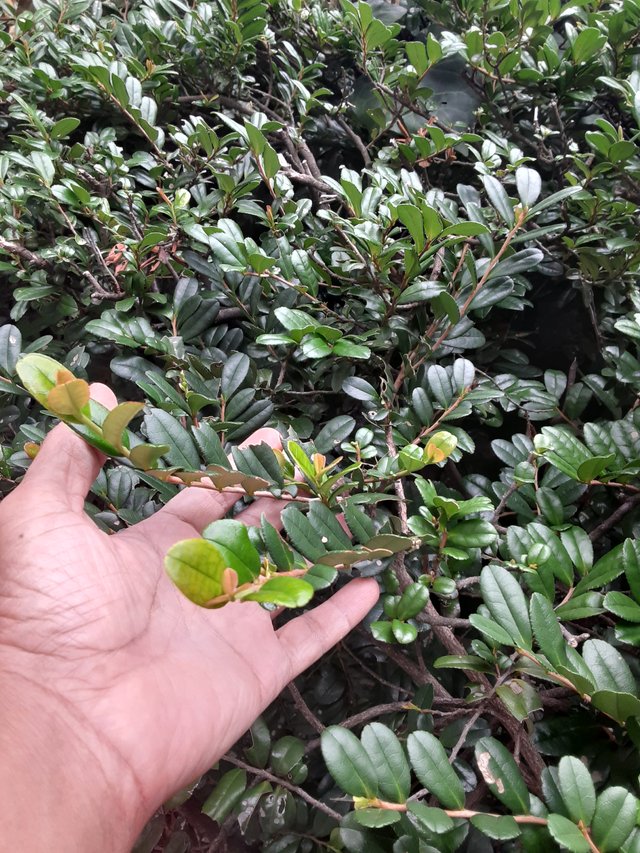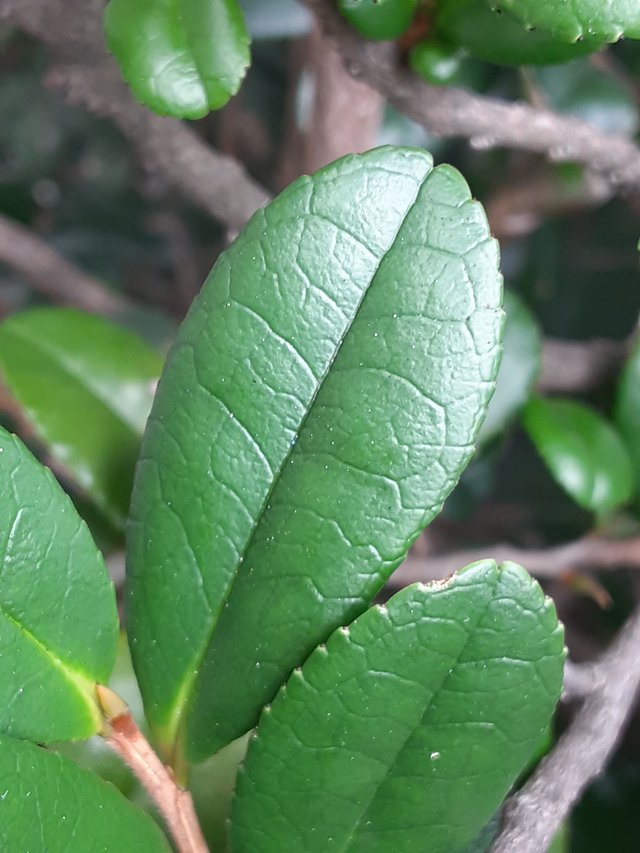
Eurya emarginata, commonly known as hamahisakaki in Japanese, is an evergreen shrub native to coastal regions of East Asia, particularly Japan and Korea. Its distinctive features, especially its leaves, make it a beloved plant in gardens and landscapes.
The leaves of Eurya emarginata are one of its most striking characteristics. They are oblong-oval in shape, with a slightly notched tip (hence the specific epithet "emarginata") and a wedge-shaped base. The upper surface of the leaves is a deep, glossy green, while the undersides are paler. The edges of the leaves are finely serrated, adding a delicate texture.
One of the most remarkable aspects of these leaves is their thickness and leathery texture. This adaptation allows them to retain moisture and withstand the harsh conditions often found in coastal environments, including strong winds, salt spray, and drought. The leaves also remain green and healthy throughout the year, providing a constant source of visual interest.

In addition to their aesthetic appeal, the leaves of Eurya emarginata play a vital role in the plant's survival. They serve as the primary site for photosynthesis, the process by which the plant converts sunlight into energy. The leaves' thick, leathery texture helps to protect the delicate tissues involved in photosynthesis from damage.
Overall, the leaves of Eurya emarginata are a testament to the plant's adaptability and resilience. Their distinctive shape, color, and texture make them a valuable addition to any garden or landscape. Whether admired for their beauty or appreciated for their ecological significance, these leaves continue to captivate plant enthusiasts and nature lovers alike.
Ref.:
 |  |
Upvoted! Thank you for supporting witness @jswit.
Downvoting a post can decrease pending rewards and make it less visible. Common reasons:
Submit